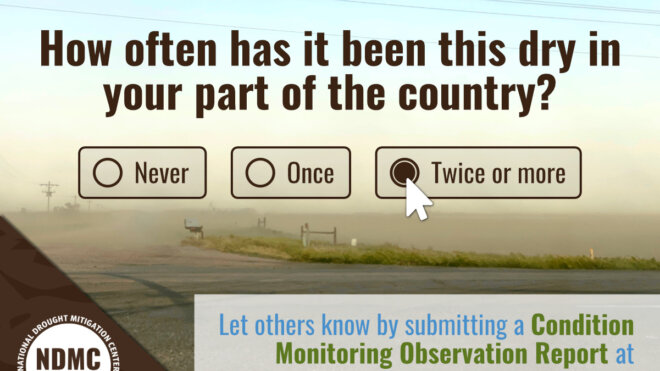The National Drought Mitigation Center, the National Integrated Drought Information System and the U.S. Department of Agriculture’s Climate Hubs are working with states, tribes and others across the country to collect Condition Monitoring Observer Reports on
Drought (CMOR-Drought), including photos. We want to know how drought is affecting you. Report drought-related conditions and impacts within the U.S. This is a nation-wide service provided by the National Drought Mitigation Center, based at the University of Nebraska, in partnership with the National Integrated Drought Information System. Information submitted by this form appears on a map and becomes part of a permanent public record. Please note that this form is not part of the process to apply for assistance.
How does this benefit you?
Your reports help us understand how drought is affecting local conditions. They appear on a map. The U.S. Drought Monitor (USDM) author may consult the CMOR map to help identify areas that need more attention. The USDM triggers drought responses, including the Livestock Forage Disaster Program and Internal Revenue Service tax provisions. State agencies, including emergency management and
public safety, may also make use of maps to know where to direct assistance. Download fact sheet.
Where do you find CMOR-drought reporting?
Landing page for CMOR-drought: go.unl.edu/cmor_drought
Includes current and archived maps of reports, and QR code for current form
Direct link to current CMOR-drought form: go.unl.edu/CMOR
Works on mobile*, tablet or computer *To report from your mobile phone, see “Getting started with the field app”
How often should you report?
We recommend that you submit a photo each month or each season, to provide an ongoing comparison of wet, dry and normal conditions. Of course, we also welcome more frequent submissions.
###

